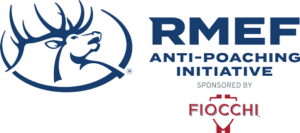 From the Pacific Northwest and the Northern Rockies to the Midwest and even up into Canada, wildlife law enforcement authorities are dealing with a plethora of elk poaching cases this fall. They need the public’s eyes and ears to serve as the first line of defense and continued engagement to help them catch perpetrators.
From the Pacific Northwest and the Northern Rockies to the Midwest and even up into Canada, wildlife law enforcement authorities are dealing with a plethora of elk poaching cases this fall. They need the public’s eyes and ears to serve as the first line of defense and continued engagement to help them catch perpetrators.
Poaching is defined as illegally taking or killing wildlife. Methods include capturing and/or killing species without legal authority or license, using someone else’s hunting tags, taking wildlife on private land without permission, leaving game meat to waste, taking wildlife out of season and similar illegal activities.
Below is a list of recent elk poaching cases. Click on each link to view details, locations, law enforcement contact information and photos, if available.
- Northern Oregon – one case near Heppner and another near Hermiston
- Western Idaho – two elk not fully harvested
- Idaho – bull elk left to waste near Moscow
- North Dakota – bull elk left to waste near Goodrich
- Colorado – suspected incident in Great Sand Dunes National Park & Preserve
- Saskatchewan, Canada – bull elk found on private land
- Colorado – four bull elk poached on four different ranches
- Montana – two spike elk left to waste on private land
- Oregon – images captured of poaching suspects
- British Columbia, Canada – bull elk killed, antlers sawed off
“Lawful hunters contribute to the conservation and management of our wildlife resources, while poachers do not. Poaching is not a victimless crime; it hurts all of us,” said Missouri Department of Conservation Branch Chief Tarvis McLain.
How to Help
State wildlife agencies urge hunters and others who may witness poaching or other illegal activities to be alert and note details to help investigators such as:
- Vehicle – note the license plate and describe the vehicle type and color
- Location – use a GPS location or mapping app to point to the location where the crime occurred
- Wildlife – note the species involved
- Photos – take photos or videos that capture the scene
- Suspect description – describe the suspect and be specific as possible
- Do NOT confront suspects
Watch two informational videos here.
Successful investigations
Active public involvement can and does make a difference in fighting poaching. Recent investigations led to charges filed in Arizona, Idaho, Missouri, Nebraska and three cases in Montana.
The Rocky Mountain Elk Foundation teams up with Fiocchi USA to increase the visibility of incidents to try to reduce poaching.
(Photo credit: Rocky Mountain Elk Foundation)